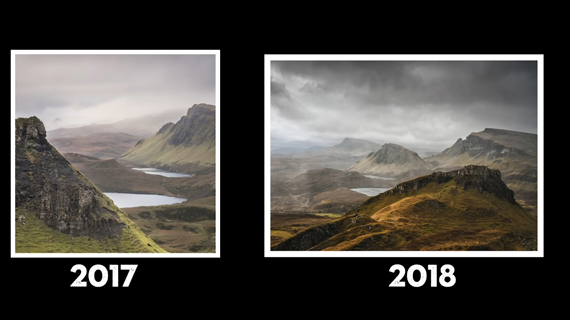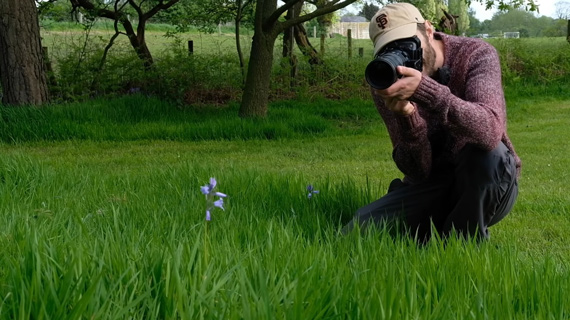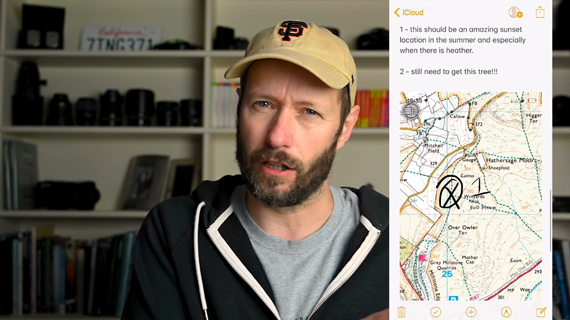A new year is a great reason to delve into new opportunities. It’s like a blank canvas where you can start afresh. If you’ve been looking for some ideas to improve your photography, photographer Nigel Danson shares seven ideas to try out this year:

1. Get Out and Photograph!
Sitting at home watching photography videos might give you some additional knowledge. But, it’s only when you go out with your camera and start taking photos that you get to develop your skills. So, go out to new locations and destinations. Take your camera with you and explore new areas around where you live. Instead of spending money on collecting gear, spend it on your travels.
“You’ve got to go out, get your camera, and start shooting. That is beyond doubt, the most important thing to do.”
Further, when you travel, you meet new people and gather more experiences. When you look back at the photos, you remember the locations and the experiences you had, not the gear that you used.
2. Look Back at Your Older Images
Take the beginning of the year as an opportunity to look back at the images you took in the previous year. Be the judge of your own work and evaluate your successes and failures. Spend some time understanding what didn’t work and how you can improve your work.
See if you can improve the composition of an image you took at a particular location. Or come up with a new concept to take the image. Also, see what lenses got you your best shots, and make a genuine effort to improve the results you get using your other lenses.
3. Print Your Images
Presentation has a great impact on the way you see your work. Being present digitally is important, but not sufficient. Besides posting your images online, also make an effort to print your images.
You can get big prints made to place on your wall or small ones to put in a scrapbook. By maintaining a printed collection of your images, you can have a look at them at the end of the year. This way you can recollect memories, evaluate your work, and also see the progression of your photography over time.
“Trust me, it is so much better having something tangible, something you can actually hold in your hands. It just makes a really big difference.”
And don’t worry if you don’t own a printer. There are many online printing services available. They also tend to give out heavy discounts which you can utilize to print your own photo book.
4. Have a Secondary Genre
If you’re serious about photography, you probably tend to stick to one genre. But it’s a good idea to spend a little bit of time on a secondary genre. Your venture into a new genre can help you in developing skills for your primary genre. You can set a milestone for yourself, too. For instance, Danson, who specializes in landscape photography, wants to make a conscious effort to have five shots that he’ll be proud of in street photography by the end of 2019.
5. Shoot Local
If you cannot invest your time in traveling to distant destinations, shooting local can give you better reasons to get out more. Think of somewhere within a 5-mile radius where you can visit at different times of the year and also shoot at different lighting and weather conditions.
“I’m sure, anywhere you are, there’s going to be a park or a tree or a field, or some macro photography that you can do, and I think it will significantly improve your photography by going out more.”
6. Take Notes
Make use of your smartphone to take notes. Danson likes to take notes in two ways: location related and shoot related.
“If I go to a location a lot, then I’ll build up notes and photos against that location.”
You can type in notes, take photos, and also add map locations showing the best places to shoot in a particular location so that you can refer to it the next time you visit.
Additionally, you can take notes related to a particular shoot. For instance, Danson likes to take notes of things like the filters he used, the height of his tripods, and anything else that doesn’t get recorded in an image’s metadata.
7. Visualization
Processing your image is just as important as taking the image. It’s essential to learn to visualize your final image before you take the image.
“If you can’t visualize what that image is going to be after post-processing, then I think you’ll then struggle to get that original image.”
And the way you can get better at visualization is to get better at using post-processing software like Lightroom. By being better at editing, you will have a better understanding of how you can manipulate that image. If you don’t use Lightroom a lot, Danson suggests that you pay attention to three things in Lightroom:
- Curves
- Hue Saturation Luminance (HSL) Slider
- Luminosity Masks
This is quite a comprehensive list of photography resolutions. Stick with even just a few of them and you’re sure to have a great photography year ahead.
What are your photography resolutions this year?
Like This Article?
Don't Miss The Next One!
Join over 100,000 photographers of all experience levels who receive our free photography tips and articles to stay current:











Thank you for sharing this inspiring video! I am in a slump and need to follow all of his excellent suggestions to get on the move in a positive way! Happy 2019 everybody!